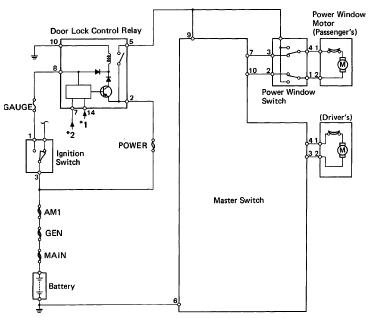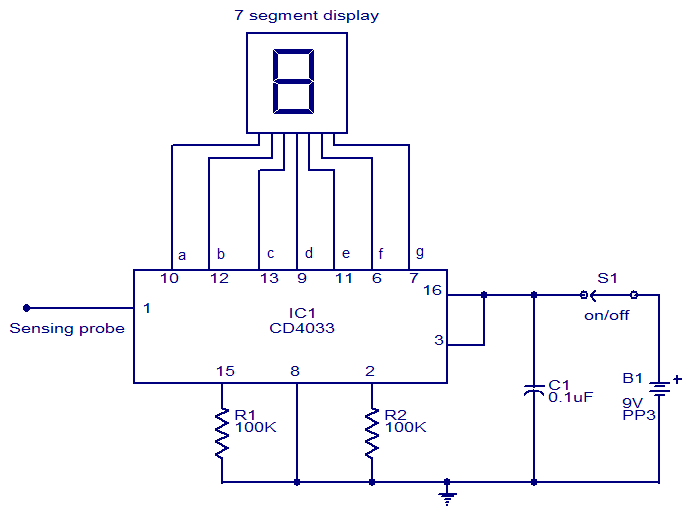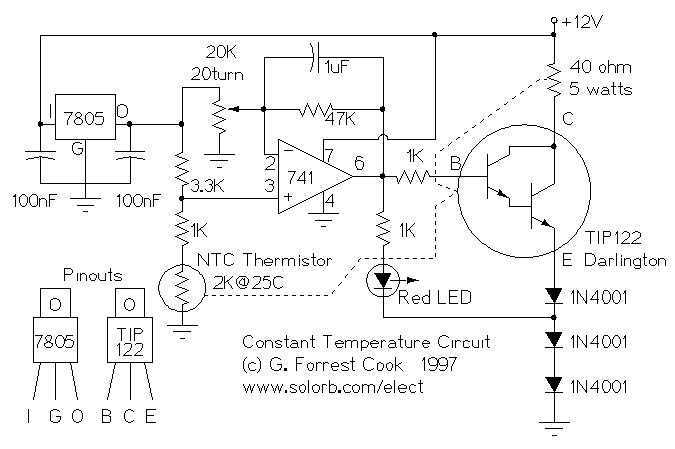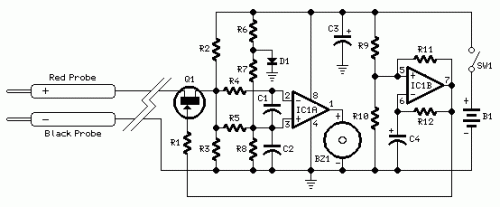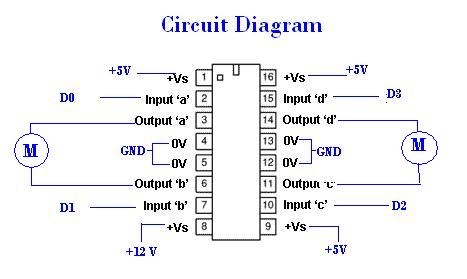
IR Remote Control Tester

This compact circuit is designed to verify the basic functionality of an infrared remote control unit. It operates on the straightforward principle of connecting a piezo buzzer directly to an infrared (IR) receiver integrated circuit (IC). This approach is nearly as simple as connecting a photodiode to an oscilloscope, but it offers the advantage of requiring no oscilloscope, making the unit portable and user-friendly compared to larger testing equipment. The operation of the remote control is indicated by the buzzer producing a chattering sound. The circuit is highly sensitive and can function over several meters. The TSOP1738 integrated IR receiver receives, amplifies, and demodulates the IR signal from the remote control, yielding an output signal at approximately 700 Hz. The piezo buzzer is connected to this output, making the signal audible. The remaining components are dedicated to generating a stable 5 V power supply from a 9V PP3 (6F22) type battery. Alternative IR receiver devices from different manufacturers can be used in place of the TSOP1738, and it is also possible to use different carrier frequencies other than the standard 38 kHz. Although the circuit can still operate with a mismatch between the nominal carrier frequencies of the transmitter and receiver IC, the effective range may be diminished. Nonetheless, it remains sufficient for confirming whether a remote control is emitting an IR signal.
This circuit comprises several key components: the TSOP1738 IR receiver, a piezo buzzer, a voltage regulator, and passive components such as resistors and capacitors. The TSOP1738 is sensitive to IR signals modulated at a frequency of around 38 kHz, which is typical for most remote controls. When the remote control is activated, it emits IR pulses that the TSOP1738 receives. The IC demodulates these signals, outputting a square wave at a frequency of approximately 700 Hz, which corresponds to the modulation of the incoming IR signal.
The piezo buzzer is directly connected to the output of the TSOP1738. When the output from the TSOP1738 goes high, it energizes the piezo buzzer, causing it to produce sound. This audible indication allows users to easily determine if the remote control is functioning properly without the need for additional equipment.
The power supply circuit is designed to convert the 9V from the PP3 battery down to a stable 5V required by the TSOP1738 and the piezo buzzer. This is typically achieved using a linear voltage regulator, which ensures that the circuit operates reliably across various battery conditions.
Overall, this circuit serves as an efficient and effective tool for testing the operation of infrared remote controls, offering portability and ease of use while providing clear audio feedback on the status of the remote control's IR signal.This small circuit is ideal for checking the basic operation of an infrared remote control unit. The circuit is based on the brilliantly simple idea of connecting a piezo buzzer directly to an IR receiver IC. This method is almost as simple as connecting a photodiode directly to the input of an oscilloscope, but has the advantage that no oscillosc
ope is needed: the compact unit is always ready to use and much easier to carry around than bulky test equipment. Operation of the remote control is indicated by the buzzer making a chattering noise. The circuit is very sensitive and has a range of several meters. The TSOP1738 integrated IR receiver accepts, amplifies and demodulates the IR signal from the remote control, producing an output with a frequency of around 700 Hz.
The piezo buzzer is connected to its output, rendering the signal audible. All the other components are simply concerned with producing a stable 5 V power supply from the 9V PP3-(6F22) type battery. Instead of the TSOP1738 similar devices from other manufacturers can be used, and of course carrier frequencies other than 38 kHz can be used.
The circuit still works if there is a mismatch between the nominal carrier frequencies of the transmitter and receiver IC, but range is reduced. It is still, however, adequate for determining whether a remote control is producing an IR signal or not.
🔗 External reference
This circuit comprises several key components: the TSOP1738 IR receiver, a piezo buzzer, a voltage regulator, and passive components such as resistors and capacitors. The TSOP1738 is sensitive to IR signals modulated at a frequency of around 38 kHz, which is typical for most remote controls. When the remote control is activated, it emits IR pulses that the TSOP1738 receives. The IC demodulates these signals, outputting a square wave at a frequency of approximately 700 Hz, which corresponds to the modulation of the incoming IR signal.
The piezo buzzer is directly connected to the output of the TSOP1738. When the output from the TSOP1738 goes high, it energizes the piezo buzzer, causing it to produce sound. This audible indication allows users to easily determine if the remote control is functioning properly without the need for additional equipment.
The power supply circuit is designed to convert the 9V from the PP3 battery down to a stable 5V required by the TSOP1738 and the piezo buzzer. This is typically achieved using a linear voltage regulator, which ensures that the circuit operates reliably across various battery conditions.
Overall, this circuit serves as an efficient and effective tool for testing the operation of infrared remote controls, offering portability and ease of use while providing clear audio feedback on the status of the remote control's IR signal.This small circuit is ideal for checking the basic operation of an infrared remote control unit. The circuit is based on the brilliantly simple idea of connecting a piezo buzzer directly to an IR receiver IC. This method is almost as simple as connecting a photodiode directly to the input of an oscilloscope, but has the advantage that no oscillosc
ope is needed: the compact unit is always ready to use and much easier to carry around than bulky test equipment. Operation of the remote control is indicated by the buzzer making a chattering noise. The circuit is very sensitive and has a range of several meters. The TSOP1738 integrated IR receiver accepts, amplifies and demodulates the IR signal from the remote control, producing an output with a frequency of around 700 Hz.
The piezo buzzer is connected to its output, rendering the signal audible. All the other components are simply concerned with producing a stable 5 V power supply from the 9V PP3-(6F22) type battery. Instead of the TSOP1738 similar devices from other manufacturers can be used, and of course carrier frequencies other than 38 kHz can be used.
The circuit still works if there is a mismatch between the nominal carrier frequencies of the transmitter and receiver IC, but range is reduced. It is still, however, adequate for determining whether a remote control is producing an IR signal or not.
🔗 External reference
